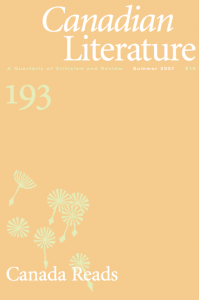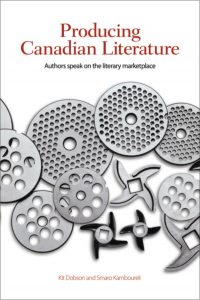English-Language Comics and Graphic Novels in Canada
Comics include a range of forms and genres, including the popular graphic novel, and go by a variety of names like cartoons, comix, the funnies, graphica, graphic literature, sequential art, and visual literature. Comics has remained the most popularly accepted general term, with the recognition that comics aren’t always funny.
Canada Reads
Canada Reads is a CBC Radio program that was launched in English in 2002 and in 2004 in French as Le Combat des livres. Over the course of a week in five one-hour segments, five celebrity judges champion a book and engage in debate about which one Canadians should read. Each day a book is voted off the list until only one is left standing. The format of the program is often compared to reality TV shows such as Survivor. The show playfully foregrounds conflict in its branding, using taglines such as “battle of the books” or “literary title fight” (CBC). That said, the champion book carries a lot of cultural cachet and the show has had enormous impact on the development of a popular Canadian reading public.
Paratexts and Literary Value
The Author’s Note is part of the paratext of Yann Martel’s Life of Pi that helps the text establish its cultural value. The Author’s Note is written in first person, and the title of the piece—“Author’s Note”—implies the speaker is Yann Martel, the author whose name is on the cover of the physical book. The speaker even gives a history of how he came to write “[t]his book” (v) by explaining his previous literary failures, some of which evoke Martel’s own earlier underwhelming literary efforts. Yet as the preface unfolds, the speaker says he met with “Mr. Patel,” the “main character” (x) of the novel Life of Pi. Suddenly, the truth of the Author’s Note is thrown into question—is the preface fact or fiction?
An Introduction to Producing and Evaluating Canadian Texts
Studies of literary prizes (Roberts), the economics of literature (English), and the hidden labour of reading for pleasure (Shukin) are expanding the fields of literary studies. These scholars are among many academics that are rethinking the study of literature in a media-driven age.












 ©
©